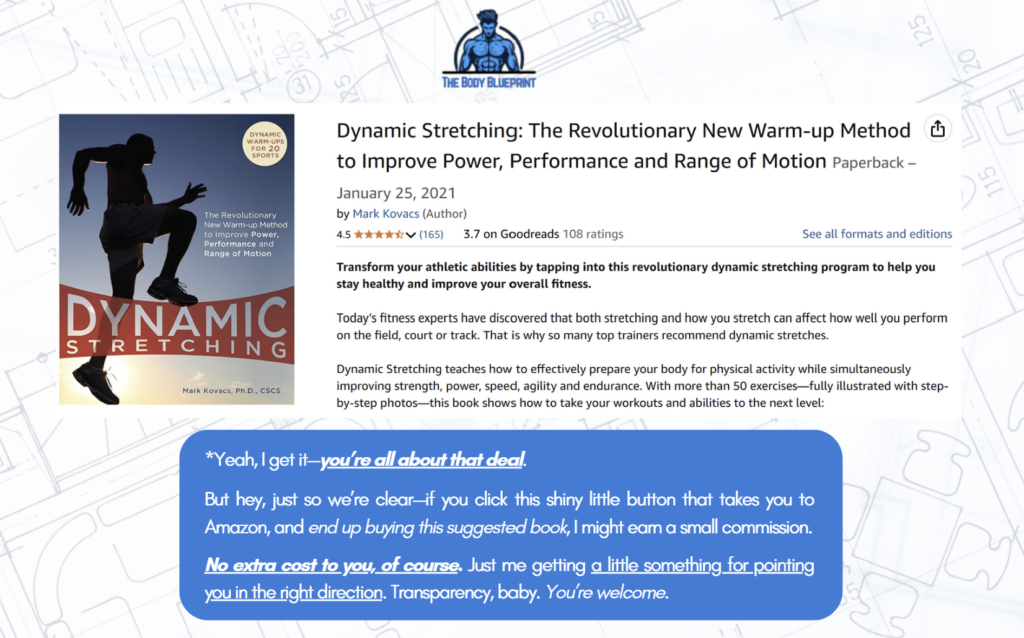Dynamic stretching is the unspoken ritual that turns garage lifters into titans. It’s the difference between creaking through a warm-up and orchestrating a symphony of muscle activation—a practice forged in the sweat-drenched dungeons of Gold’s Gym and polished by modern hypertrophy savants. Imagine Franco Columbu in 1975, minutes before deadlifting 750 pounds, prowling the platform like a panther, arms windmilling, hips spiraling, tendons humming with kinetic potential. That’s dynamic stretching: the art of turning biology into artillery.
The Golden Era Blueprint: Why Dynamic Stretching Built Immortal Physiques
Bodybuilders of the ’70s and ’80s didn’t stumble onto dynamic stretching by accident. They engineered it. These were men who treated their bodies like precision machinery—greasing joints, testing range of motion, and priming their nervous systems like drag racers tuning nitromethane engines.
“Arnold didn’t just stretch. He negotiated with his muscles. Every leg swing was a contract: ‘You give me depth on this squat, I’ll give you another inch on your sweep.’”
— Eugene Thong, CSCS
The Neuro-Muscular Handshake
Dynamic stretching isn’t just movement—it’s communication. When you swing a leg forward, you’re not just stretching hamstrings. You’re:
- Awakening dormant motor units (muscle fibers that sleep through half-assed warm-ups).
- Flushing fascia with fresh blood, softening the plastic-like tissue that strangles growth.
- Programming your cerebellum to coordinate compound lifts with pit-crew precision.
Real-world example: Dorian Yates, notorious for his brutal training style, spent 12 minutes pre-session on dynamic stretches. Not for “flexibility”—but to eliminate weak links before loading 500 pounds on his back. “If my hips couldn’t hinge freely,” he’d say, “my spinal erectors would’ve quit by ’93.”
Dynamic vs. Static: The Iron-Clad Rules Bodybuilders Live By
| Dynamic Stretching | Static Stretching |
|---|---|
| Controlled momentum (e.g., walking lunges with thoracic twists) | Passive holds (e.g., seated toe reach) |
| Primarily pre-workout (enhances power output by 8-10%) | Post-workout/recovery days (resets muscle tone) |
| Triggers fast-twitch muscle recruitment | Encourages parasympathetic relaxation |
| Used by: Ronnie Coleman (pre-squat ritual), Jay Cutler (pre-deadlift routine) | Used by: Yogis, physiotherapists |
The Flex Wheeler Epiphany
In ’98, Flex Wheeler added banded hip circles to his dynamic routine. Result? His notoriously tight hips—which once limited his squat depth—unlocked. Within 6 months, his quad sweep gained ¾ inch. “I wasn’t just flexible,” he said. “I was ballistic.”
The Physics of Iron Poetry: How Dynamic Stretching Rewires Muscle
Your muscles aren’t dumb meat—they’re live wires waiting for commands. Dynamic stretching speaks their language:
- Stretch-Shortening Cycle (SSC): When you lunge with a twist, your hip flexors stretch (eccentric phase), then snap back (concentric phase). This SSC boosts power output by 15-20%—critical for explosive lifts.
- Golgi Tendon Organ (GTO) Modulation: Dynamic moves “trick” GTOs (which normally inhibit extreme force) into allowing heavier lifts. Example: Banded shoulder dislocations pre-bench press reduce rotator cuff “panic” under load.
- Fascial Sliding: Static stretching tears fascia; dynamic stretching greases it. Picture oiling a leather strap—it becomes supple, resilient.
“Dynamic stretching is the WD-40 of hypertrophy. It doesn’t add muscle—it uncovers what’s already there.”
— Charles Damiano, B.S. Clinical Nutrition
Case Study: The 2003 Dexter Jackson Adjustment
When Dexter plateaued on shoulder size, his coach replaced static stretches with dynamic band pull-aparts. Within 8 weeks, his delts erupted. Why? The pull-aparts pre-activated rear delts, letting him overload side laterals with 30% more weight.
The 5 Dynamic Stretches That Forged Pro Physiques (And How to Steal Them)
- The Cuban Snatch
- Origin: Coined by Louie Simmons for Westside Barbell lifters.
- Execution: Hold light dumbbells, rotate arms from hips to overhead (like a snatch) with controlled momentum.
- Bodybuilder Hack: Kai Greene uses this pre-back workouts to ignite teres major and lats.
- Banded Lat Shuffles
- Science: The band’s tension forces lats to stabilize during lateral steps, priming them for pull-ups.
- Pro Tip: Branch Warren did these pre-Mr. Olympia to accentuate his V-taper under stage lights.
- Prowler Push to Sprint
- Why It Works: Pushing a weighted sled dynamically stretches hip flexors; the immediate sprint taps into the SSC.
- Golden Era Twist: Tom Platz would push a Volkswagen Beetle pre-leg days. (Don’t try this.)
- Thoracic Bridge Rotations
- Anatomy Play: Opens restricted thoracic spine, critical for overhead press stability.
- Modern Application: Chris Bumstead does these pre-deadlifts to protect his historically injury-prone back.
- Dynamic Plank Drag
- How-To: In plank position, drag knees toward elbows (one leg at a time).
- Hypertrophy Secret: Pre-activates transverse abdominis, letting you brace heavier on squats.
The Emotional Alchemy: Why Your Workout Starts Before the First Plate
You know that gym rookie who loads 315 on the bar, then grinds through a half-range bench? His pecs aren’t weak—they’re asleep. Dynamic stretching isn’t just physiology; it’s psychological warfare against mediocrity.
The Frank Zane Principle
Zane, known for his aesthetic perfection, treated dynamic stretches like pose rehearsals. Each twist and extension was a dress rehearsal for the mandatories. “Your warm-up,” he’d say, “should embarrass your competition.”
Final Rep:
Dynamic stretching is the ironclad contract between ambition and anatomy. Skip it, and you’re lifting with the parking brake on. Embrace it, and you join the lineage—from Schwarzenegger’s Vienna to Bumstead’s Ontario—where muscle isn’t built, awakened.
“You don’t warm up to lift. You warm up to transcend.”
— Eugene Thong, CSCS

